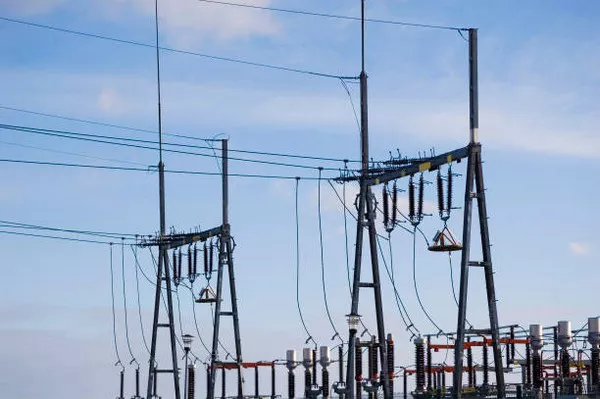Transformers are fundamental components in electrical systems, facilitating the transfer of power between circuits through electromagnetic induction. Typically, transformers operate with alternating current (AC). However, there might be scenarios where applying direct current (DC) to transformers is considered. This article delves into the potential outcomes and consequences of such a decision, exploring technical aspects, practical implications, and considerations for engineering applications.
Understanding the Basics of Transformers:
Transformers are devices that operate on the principle of electromagnetic induction to transfer electrical energy between circuits. They consist of two coils of wire, known as the primary and secondary windings, wrapped around a shared magnetic core. When an alternating current flows through the primary winding, it induces a changing magnetic field in the core, which in turn induces a voltage in the secondary winding, allowing power transfer.
The Impact of DC on Transformers:
Transformers are designed to work efficiently with AC. When exposed to DC, several significant differences and challenges arise:
1. Magnetic Saturation:
DC current in the primary winding creates a constant magnetic flux in the core. Unlike AC, which alternates direction, this can lead to magnetic saturation. Saturation occurs when the magnetic core reaches its maximum flux density, limiting further magnetic induction and potentially causing overheating and inefficiency.
2. Core Losses:
In AC transformers, core losses primarily result from hysteresis and eddy currents. However, with DC, these losses become constant, leading to increased heat generation and reduced efficiency. The continuous flow of DC can exacerbate core losses, necessitating adjustments in transformer design and materials.
Engineering Considerations for DC Application:
While applying DC to transformers presents challenges, engineers can implement various strategies to mitigate risks and optimize performance:
1. Core Design and Material Selection:
Utilizing specialized core materials with high magnetic permeability and low coercivity can minimize magnetic saturation and core losses. Additionally, employing advanced core designs, such as toroidal or shell-type cores, can enhance efficiency and reliability in DC applications.
2. Voltage Regulation:
DC transformers may require additional voltage regulation mechanisms to maintain stable output under varying loads and input conditions. Incorporating feedback control systems or active components can help achieve precise voltage regulation and improve overall system performance.
3. Cooling and Thermal Management:
Effective cooling systems are essential to dissipate heat generated by DC transformers. Engineers may employ methods such as forced air or liquid cooling to maintain optimal operating temperatures and prevent thermal degradation.
Practical Applications and Industry Trends:
Despite the inherent challenges, there are specific scenarios where applying DC to transformers is warranted:
1. Renewable Energy Integration:
In renewable energy systems, such as solar photovoltaic (PV) and wind turbines, DC generation is prevalent. Converting DC to AC for grid integration often involves transformers. Optimizing transformers for DC operation can improve energy conversion efficiency and facilitate seamless integration into the existing grid infrastructure.
2. High-Voltage Direct Current (HVDC) Transmission:
HVDC transmission systems are increasingly utilized for long-distance power transmission due to lower losses compared to traditional AC transmission. DC transformers play a crucial role in HVDC converter stations, where they facilitate voltage conversion and power transfer between AC and DC grids.
3. Electric Vehicle Charging Infrastructure:
As electric vehicles (EVs) become more widespread, the demand for efficient DC charging infrastructure grows. Transformers play a vital role in converting grid AC to DC for fast charging stations. Developing transformers tailored for DC applications can enhance charging efficiency and support the rapid expansion of EV networks.
FAQs
Q1: Can existing AC transformers be modified for DC operation?
A1: While it is possible to retrofit AC transformers for DC operation by adjusting core materials and winding configurations, this approach may not always be feasible or cost-effective. Designing transformers specifically for DC applications is often more efficient and reliable in the long term.
Q2: What are the advantages of using DC transformers in HVDC transmission systems?
A2: DC transformers in HVDC systems offer lower transmission losses, higher efficiency over long distances, and enhanced controllability compared to traditional AC transformers. They enable seamless integration between AC and DC grids, facilitating efficient power transmission and grid stability.
Q3: How do DC transformers impact system reliability and maintenance requirements?
A3: DC transformers may have different reliability and maintenance requirements compared to AC transformers due to unique operating conditions and potential challenges such as magnetic saturation and core losses. Regular monitoring, preventive maintenance, and advanced diagnostics are essential to ensure optimal performance and longevity.
See Also What Type Of Transformer Is Used In Automatic Voltage Stabilizer
Conclusion:
In summary, applying direct current (DC) to transformers presents both challenges and opportunities in various engineering applications. Understanding the implications of DC operation on transformer performance is crucial for designing efficient and reliable electrical systems. By leveraging advanced design techniques, materials, and innovative solutions, engineers can overcome technical obstacles and unlock the full potential of DC transformers in modern energy infrastructure.

